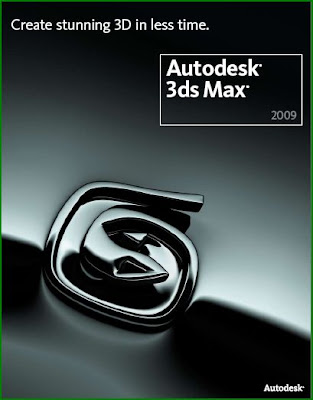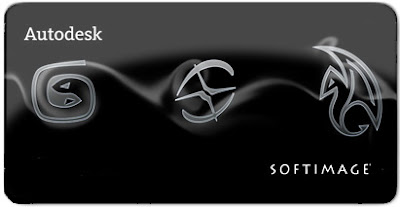Also, designing the visual art and its complexity will vary depending on the genre and the target audience.
Anime styles are made to appeal to target audiences, each genre has a description and all in the industry would know immediately who that particular style would appeal too. So designing the character visual form will have a distinctive and different sense whether its targeted for young or adults.

For example, the character figures in adult anime are more detailed, mature-like, body parts defined or exposing, sexy or vague gesture, deep facial expressions and so on. The themes sometimes have extreme violence or adult scenes.
Examples:Anime styles are made to appeal to target audiences, each genre has a description and all in the industry would know immediately who that particular style would appeal too. So designing the character visual form will have a distinctive and different sense whether its targeted for young or adults.

For example, the character figures in adult anime are more detailed, mature-like, body parts defined or exposing, sexy or vague gesture, deep facial expressions and so on. The themes sometimes have extreme violence or adult scenes.
Hell Girl: the genre is horror , so the style obviously will be mystery, harrowing tales of revenge, and a dash of modern technology, violence, creepy scenes etc.
The character and background designs are the perfect example of "beautiful but dead", the haunting glow of the underworld in hell girl's eyes, and the horror scenes that each victim experiences right before going to Hell.
But it's not all about the gloomy world, of course, the modern-day portions that added up to the majority of the series show strong attention to detail, from room interiors to city streets, and each episode comes with a fairly diagnostic cast of characters.
Hell Girl Trailer:
Ghost in the shell : the genre is science fiction, the style is more detailed, the character development is more advanced , it has complex plot and philosophical depth, used extreme violence, cyborg, electronic, action, futuristic, and adult themes
Ghost in The Shell Trailer:
While kids characters drawn in simple and basic form, with funny, cute gestures, characters usually wear school uniform or normal clothes, strange bright color hair or style etc.
Similar anime genre will likely have similar animation styles as the way characters are drawn; this definitely influences the tone and feel of the story.
The Artist Personal style:
The artist sometimes use the personal style to form the characteristic style, for example:
"Death Note" is a Japanese manga, anime, live-action movie series created by writer Tsugumi Ohba and manga artist Takeshi Obata. It has the gothic appeal, mature, dark, smart and realistic style. Even the characters have given them the psychological standpoint, that made the anime more serious and interesting to watch. The art attempts to be as “anime-like” as maintaining its realistic and mysterious quality.

Tsugumi Ohba is the writer for Death Note and there is speculation that Tsugumi Ohba is a pen name. His real identity is a closely guarded secret. As stated by the profile placed at the beginning of each Death Note manga, Ohba collects teacups and develops manga plots while holding his knees on a chair, similar to a habit of "L", the main character of the series.
Ohba gave some of his real identity style to his fictional character "L", and that personal touch made "L" very unique and incomparable. In the storyline, L is considered to be the world's greatest detective, who can control police forces worldwide and whose identity remains unknown because he has never revealed himself to the public. The most noticeable features is the shadow below each of his eyes, a result of sleep deprivation.
Here is what has been said when developing L style:
"Since Ohba believed the story would not hold much interest if L were significantly older than Light, the character was created as a young adult. Obata said that, during the development of the early manga chapters, he feared that L would appear "so suspicious that Light would know instantly it was L if they ever met". When Obata's editor told him that he wanted L to have a face "looking cool based on the angle", Obata added black bags under L's eyes. Obata cited Devilman's Akira Fudou when stating that he believed that black bags were appealing. In addition, Obata thought of a "dead eyes" concept, which involved L having "all-black eyes" and "mostly no eyebrows". Obata believes that black eyes usually makes a character goofier, but the bags "sharpen the character's gaze". Obata believes that the design evokes "a feeling of mystery" and that the reader cannot determine L's true thoughts. Obata also said that the bags under L's eyes were useful for inspiring speculation about his lifestyle and background. The outfit Obata designed for L was a "simple" white, long-sleeved shirt and jeans, to convey that L does not put thought into choosing his clothing."
As as a result of developing "L" style in such detail, and considering the appearance; specially the eyes; facial expressions, and movements; makes "L" character outstanding.
Publications from manga and anime have commented on L's character. Tom S. Pepirium of IGN describes L as "the coolest, most well developed character in anime today".
The artist employ the personal style to his own character to make it special and superior,and that what make each character style in anime different from another. .
The other example of artist conveying their own style when designing the characters in anime is "Nana". Nana is a Japanese shōjo manga and anime series written and illustrated by Ai Yazawa. Yazawa attended a fashion school after high school but did not complete her studies there.
The other example of artist conveying their own style when designing the characters in anime is "Nana". Nana is a Japanese shōjo manga and anime series written and illustrated by Ai Yazawa. Yazawa attended a fashion school after high school but did not complete her studies there.


The characters look like models with more attention given to appearance (body shape,clothes and hair style).
The fashion element represents the variety of youth subcultures and stereotypes (the academic students, musicians, art-school students, service workers, punks, goths, lolitas fashion, etc) and all can be seen on characters while they are in their job uniforms, dressed up for shows, on music posters, and etc.
The fashion element represents the variety of youth subcultures and stereotypes (the academic students, musicians, art-school students, service workers, punks, goths, lolitas fashion, etc) and all can be seen on characters while they are in their job uniforms, dressed up for shows, on music posters, and etc.
Indeed, her personal touch in anime characters make Ai Yazawa's style one of its kind in modern anime art.
Eyes:

Anime characters have been largely influenced by the styles of Disney. Not all characters have the huge eyes and tiny noses and mouths that most people think of, sometimes characters are drawn to look more western (western, in the scope of the world). Eye shape and size can be exaggerated or changed altogether.
Facial Expressions:

The facial expressions, though many, follow a pre-determined facial expression that conveys clearly the moods and thoughts of al anime characters.
Body Proportions:

The interesting point in anime is that the height of head is usually considered as the base unit of proportion. Thus most of the anime characters are generally seven to eight heads tall. The extreme character may have nine heads tall.
Hair:

One of the more inspiring attribute of Anime and Manga is the varied and often unnatural hair styles and colors. In many ways and in many different anime, the hairstyle of the character is used to define what type of person that character is.
Sources:
http://www.wikihow.com/Make-Your-Own-Anime-or-Manga-Character
http://www.nz17.com/anifanatikku/articles/12.php
http://www.csua.berkeley.edu/~jleek/anime/culture.html
http://my.opera.com/josephnepomucin/blog/why-do-japanese-anime
http://talem.hubpages.com/hub/Anime-Japanese-Animation-Style
http://students.cis.uab.edu/archived/aka10/AnimeGenre.html
http://en.wikipedia.org/wiki/Death_Note#Anime
http://en.wikipedia.org/wiki/L_(Death_Note)
http://www.animenewsnetwork.co.uk/encyclopedia/people.php?id=70249
http://deathnote.wikia.com/wiki/L_Lawliet
http://en.wikipedia.org/wiki/Nana_(manga)
http://en.wikipedia.org/wiki/Paradise_Kiss
http://www.animevice.com/news/wtf-wednesday-facial-expression-training-charts/2379/
http://www.designyourway.net/blog/tutorials/photoshop-tutorials/drawing-anime-big-tutorial-collection/
http://mayshing.deviantart.com/art/Anime-art-lesson-Hair-1475745
http://en.wikipedia.org/wiki/Lolita_fashion
http://www.bellaonline.com/articles/art4260.asp
http://kksonakiya.hubpages.com/hub/Why-Anime-is-Not-For-Kids
http://lucasdurham.blogspot.com/2010/11/canons-of-proportion.html
http://moonbase.rydia.net/mental/writings/anime-hair-color






















